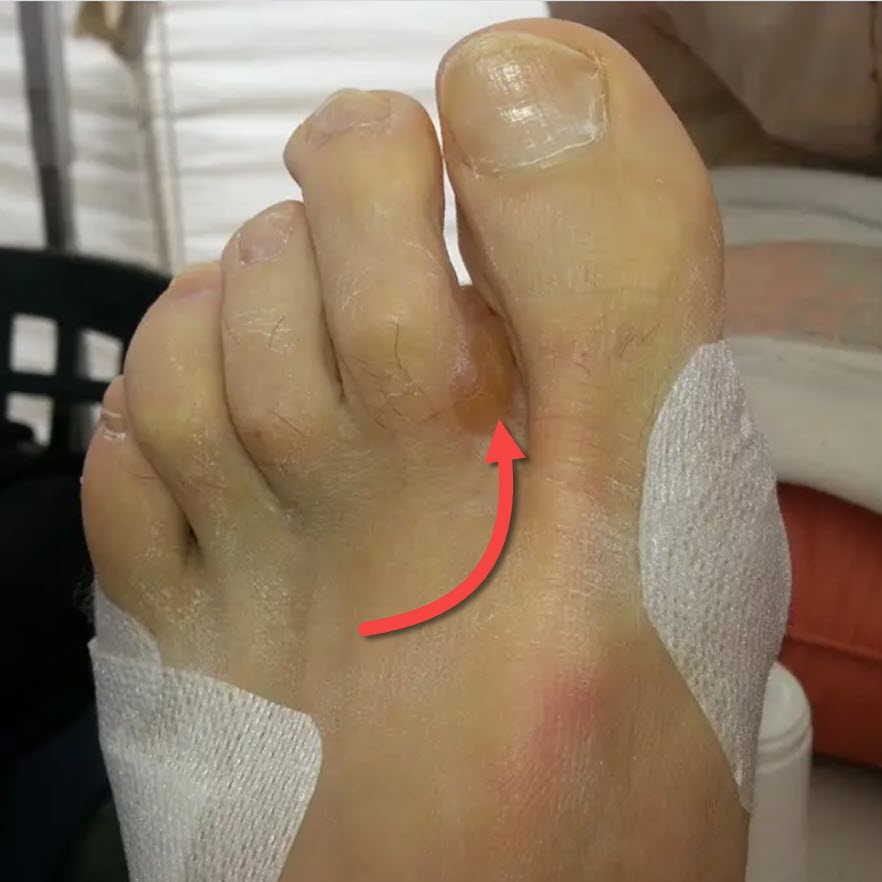A little while ago during The Blister Hour, Scott asked me about some distal forefoot blisters he regularly gets during ultramarathons. The area is kind of between the ball of the foot and the base of the toes. Here's a picture of where Scott was referring to (the red area, as opposed to classic ball-of-foot blisters in the green area). Scott asked if lubricants are the best prevention strategy for these.
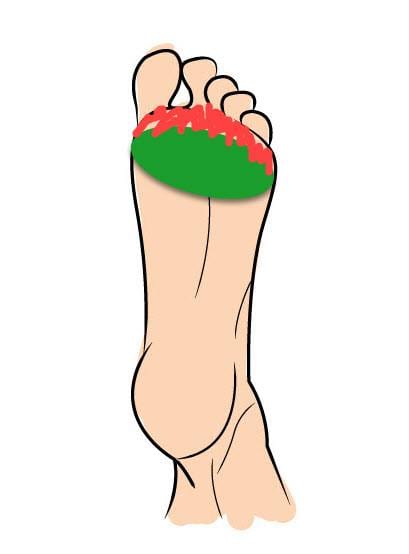
Distal forefoot blisters (red area) - somewhere between the ball of the foot (green area) and the base of the toes.
The short answer
The short answer is, blisters in the red area are actually caused by blister-causing forces in the green area. Weightbearing forces in the green area push the blister fluid to the much less weightbearing red area. So there's no point focusing your prevention in the red area - you have to treat these as classic ball-of-foot blisters and apply your prevention to the green area. You can use lubricants, absolutely. But here are the 5 prevention strategies I recommend because they'll probably work better and for longer.Scott replied:Interesting thanks. You understood me 100%. This wasn’t how I was thinking about the problem. So there is no possibility of there being a rubbing within the crease itself? I’m still feeling surprised that you can dismiss that option so confidently. Not saying you’re wrong (I am no expert) but this is certainly a paradigm shift for me. Thanks for the feedback!
Photos of the distal forefoot blister and prevention in place
Later, Scott sought clarification with a photo of his latest blister:I have an actual photo now on my foot. Do you know what’s happening here and how to best prevent it? These are more annoying than race ending but they always occur in my multiday races. You can see that blister still there 2 days later but I’m not feeling it. I’m using somewhat stiff tape as per your advice. I use multiple socks and this tape actually gripes nicely to the inner most sock. I used to have blisters on the balls of my feet but this method has been great ay preventing those. I’m honestly not sure if I can do much more in that area as I feel I’m doing a lot already. I’m very interested in hearing your reaction to my tape photo.
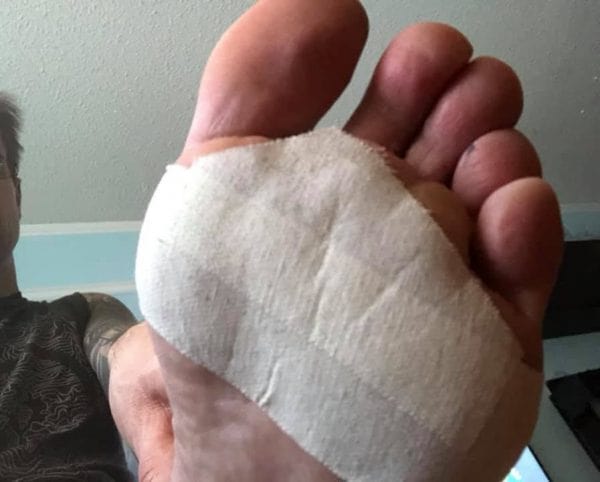
Scott's distal ball-of-foot blister, in spite of taping.
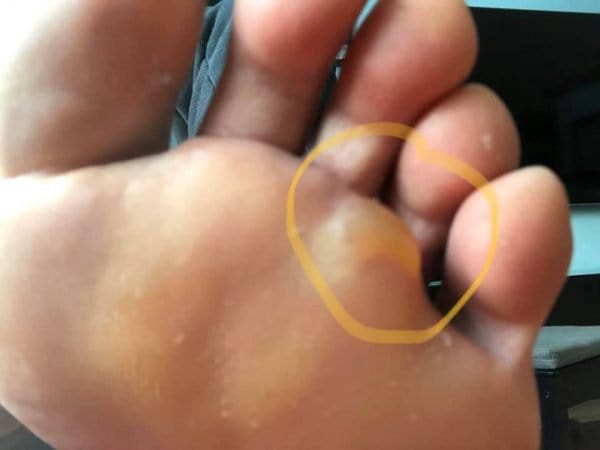
Scott's distal forefoot blister two days after his ultramarathon (circled)
The slightly longer (and more comprehensive) answer
I can certainly explain this Scott. It’s a tricky one to get the head around, so stick with me.
The cause of distal forefoot blisters
The skin needs to undergo a lot of stretching (shear) for a blister to form. One necessary component of this is pressure, and another is bone movement. It is not a particularly pressurised area up here under your toes (yellow) is not a particularly pressurised area. The kind of pressure and bone movement required for blister formation is back just a bit (red circle).
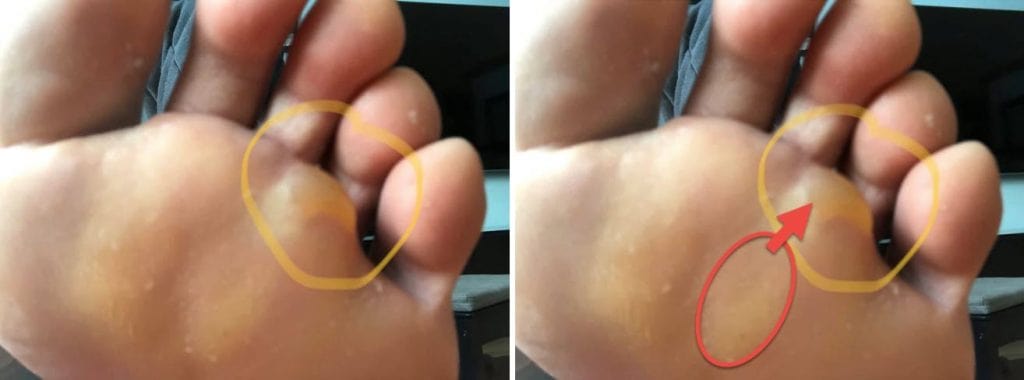
Distal forefoot blister location (yellow circle) and cause (red circle)
So shear distortions where the red circle is, cause the blister. This area is where the highest weightbearing pressure and bone movement is. Because of that really high weightbearing pressure, any fluid that is produced finds it really difficult to be contained in the local area. So it is forced to track to somewhere where there is less pressure, and it settles there. The path of least resistance is distally, towards the toes rather than back towards the arch.As more fluid is formed, the blister can appear between the toes. I’ve seen this most often with the big toe / second toe. But the blister is caused under the ball of the foot.
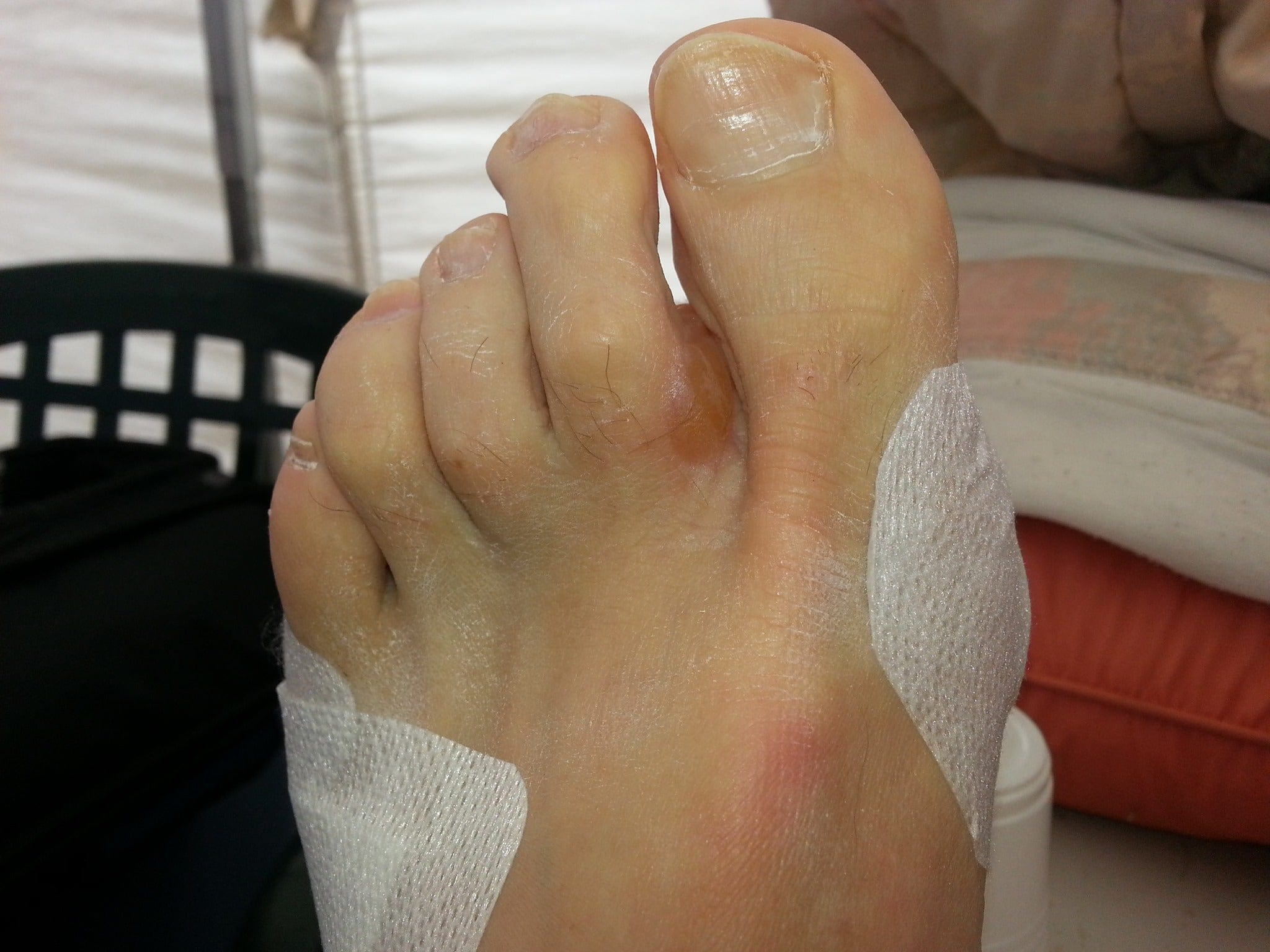
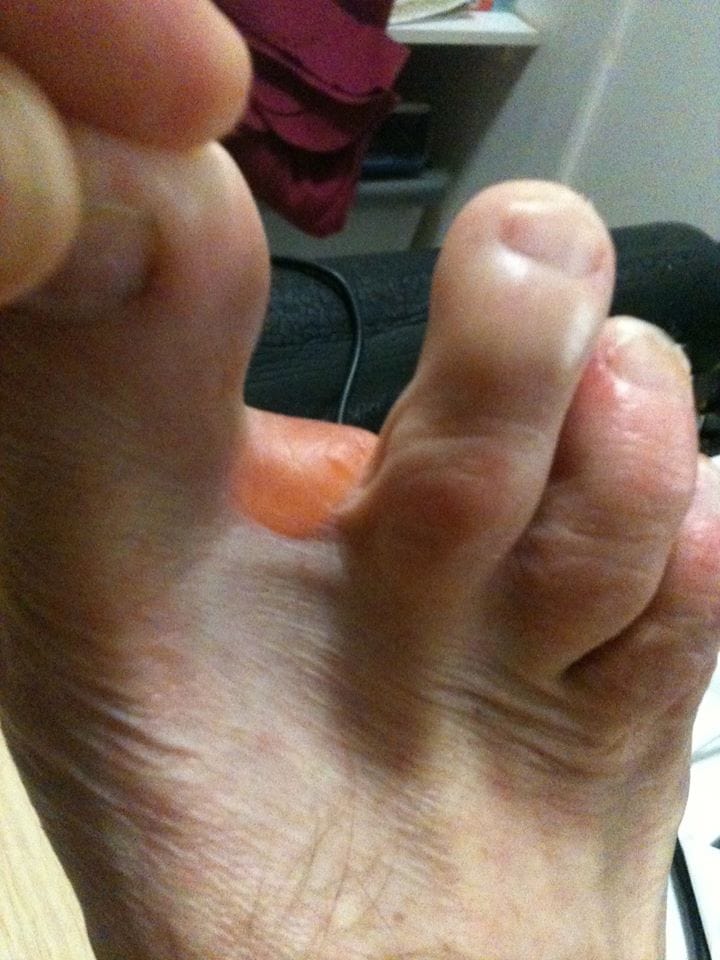
Other examples of distal forefoot blisters. As the blister fluid increases in volume, it continues to track into a less pressurised area - between the toes.
The prevention of distal forefoot blisters
So when you’re looking to prevent these blisters, don’t concentrate on where you see the blister – concentrate on where the blister is being caused. In the “blisters under the ball of the foot” article, there are 5 prevention strategies I recommend. Some work better than others. You’ve focussed on one of the strategies I’ve mentioned (taping, which spreads shear load). It's one that is worth trying, but I’m never surprised if it doesn’t work 100%.You’ve also attempted to reduce friction levels by using double-socks. It’s really important to reduce friction levels here, but double-socks probably won’t provide friction levels low enough for long enough. An Engo patch will do better. A large oval will probably do the trick for this blister, but if you don’t believe me that these blisters are caused proximally and you want to also reduce friction levels distally where the blister is, use a rectangle patch and cover both areas.If your taping and Engo patch doesn’t do enough to prevent this blister, you’ll need to do something about pressure and bone movement. Use a modified donut pad, either stuck to your foot, but better still, stuck to the underside of your insole. Position the cavity of the donut pad where the blister is caused, as well as where the blister is. Alternatively, reduce pressure and bone movement in this area with the input of a podiatrist. A closer examination will determine if the structure and function of your foot will allow this.
Wrapping up
This is one of the more uncommon and confusing blister locations, for sure. But with a little knowledge of foot function and blister causation, it can be fully explained and prevented. Be sure to go through all of the strategies mentioned in the “blisters under the ball of the foot” article.
